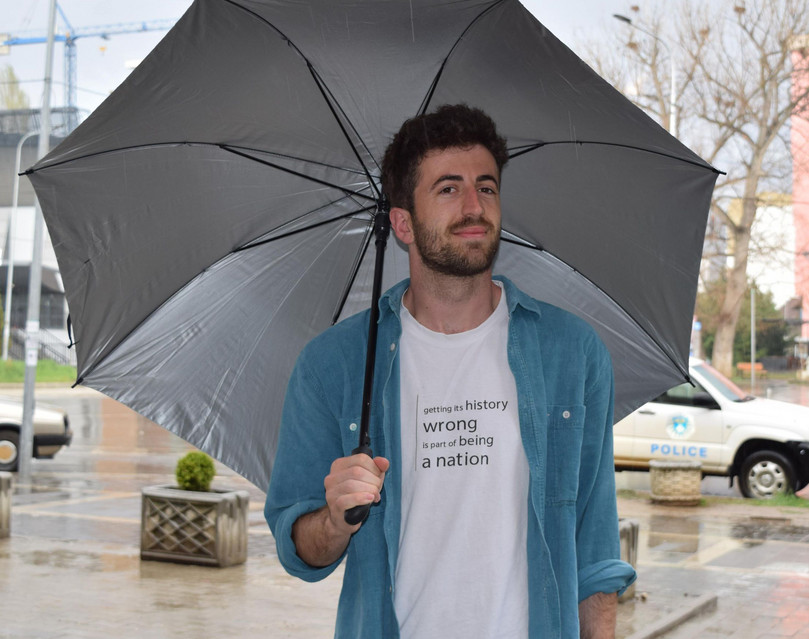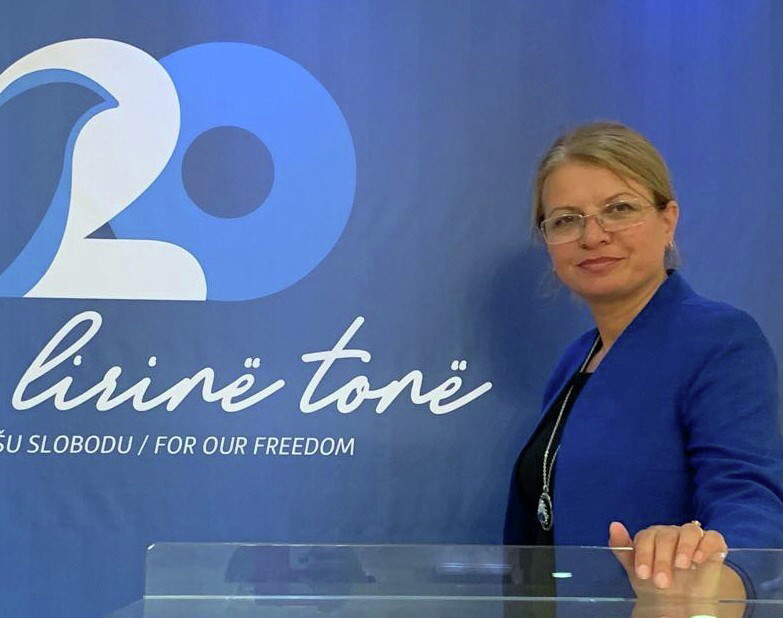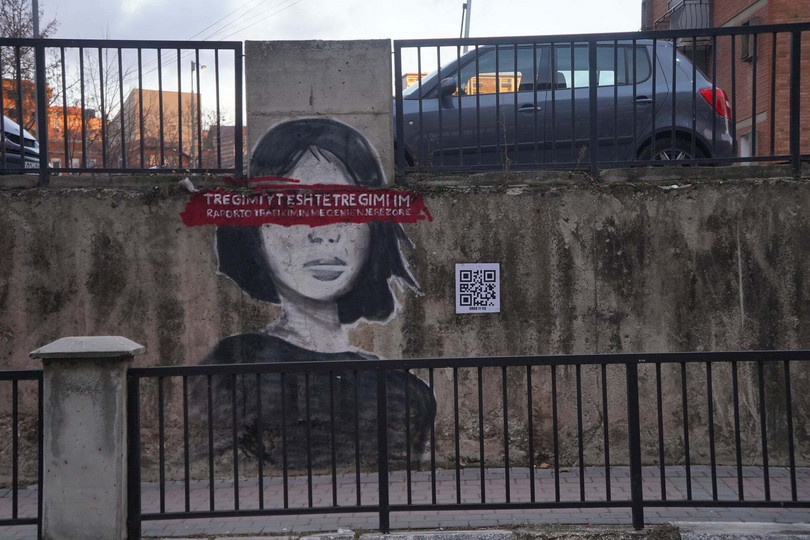Community Building Mitrovica: An open door for young people.


Genti Behramaj and Aferdita Sylaj Shehu.
Community Building Mitrovica
Community Building Mitrovica (CBM) is a civil society organization based in Mitrovica, Kosovo. More than 20 years after the war, the city continues to be divided, with a Kosovo-Albanian community located in the southern part of the city and a Kosovo-Serbian community in the northern part, separated by the Ibar river. Tensions remain and the rule of law is weak. As a result, the region continues to have a reputation as a haven for organized crime.
Genti Behramaj and Aferdita Sylaj Shehu talk about the work their organization undertakes, some of the challenges that they face and how CBM’s activities help to increase resilience to organized crime in this difficult environment.
When and why was CBM founded and what does the organization do?
Twenty years ago, CBM started as an international peace project for community reconciliation funded by the Inter-Church Peace Council. In 2003, it was registered as a local NGO aimed at bringing the different communities together and establishing dialogue between the Serbian and the Albanian communities. This was particularly important given that, since the end of the war in Kosovo in 1999, intermittent closures of the bridge over the Ibar river as well as violent attacks against those crossing it led to a de facto separation of the two communities. The bridge has become a symbol of separation rather than connection, with many people on either side still reluctant to cross it.
Today, CBM is one of the biggest CSOs in the region, with approximately 15 employees. As the gap between the Serbian and Albanian communities remains wide, we are working on several projects designed to reduce inter-ethnic tensions and divisions within the political system, the low level of employment (especially among youth) and local trends of organized crime. CBM not only works in the city of Mitrovica, but also covers the whole region of North Kosovo. We also carry out activities in other parts of Kosovo and across the Western Balkans.
We often work with children at local high schools and primary schools to focus on prevention. We try to steer these young people away from negative influences and we work with them on issues affecting their daily lives through civic education. We also bring role models to them to discuss possible challenges. In short, we try to show them that there is another way of doing things.
CBM is also an open door for young people, for whatever they need. We support their ideas in the community, we organize peer-to-peer training sessions and workshops on how to identify vulnerability and then we try to involve them in our activities. After 20 years of operation, we are starting to see the fruits of our work. Children who participated in our training years ago are now activists or peacebuilders – they are successful people working for the good of society.

A mural in Mitrovica, Kosovo, reading ‘Your story is my story. Report human trafficking’, December 2020. The campaign against human trafficking in North Kosovo was supported by the Resilience Fund.
Photo: © Community Building Mitrovica
What are the main challenges for civil society organizations in an area where ethnic divisions and organized crime are so entrenched?
One of our main challenges is to stay focused, particularly on issues concerning young people. Another challenge is to be accepted. Because of the polarized ethnic situation here, there are different perspectives. Depending on who you talk to, some people think of us as a Serbian organization, others as an Albanian one. The key for us is to build trust and to engage people from both communities. For example, until recently, institutions in the Serbian-majority areas did not work with Kosovo-registered NGOs. But CBM managed to establish a channel of communication with them and is now implementing projects and activities together with representatives of these communities.
How do young people see and experience the division in the Mitrovica region?
Due to the lack of contact and dialogue between the communities, there continue to be many stereotypes and prejudices, including among young people who have grown up in an environment where they are taught to not trust each other. But when we bring them together at CBM, things change. We focus on a topic of common interest instead of forcing cooperation. Then they start to communicate and work together. To name just one example: good friendships were created through CBM Mitrovica’s ‘school of rock’ and now there are several bands with ethnically-mixed young people playing music together.
Change takes time, but we see the results every day. You can see many people crossing the new bridge across the Ibar river. Since the 2013 agreement between Serbia and Kosovo, which included the integration of the Serb-majority communes into the Kosovo system, things have changed significantly. The city appears to be politically more stable and businesses have started to invest too. The fact that they invest in Mitrovica gives us hope that there is not going to be another conflict and so people communicate more and feel safer.
How is organized crime perceived and what is its impact in your community?
Organized crime is not a key concern for local youth and many feel that it does not affect them directly. There is also a lot of misinformation or lack of knowledge about organized crime. For example, during our activities organized with support of the GI-TOC’s Resilience Fund,1 participants thought that there wasn’t a lot of human trafficking in the community and emphasized that this phenomenon does not take place locally.
But we actually see signs of human trafficking in our daily life here in Mitrovica. It is happening all around us: near bus stops and schools. Although young people know that sexual exploitation is a crime, they often do not make the connection and do not know how to address it. This is why it is very important to raise awareness around these issues.
You mentioned that institutions are also reluctant to speak about organized crime. Is this topic generally a taboo?
People are often unaware of what organized crime is and how it impacts life in the community. People do not know a lot about the topic and this is why it is not discussed. Nobody we spoke to in recent projects could actually define organized crime.
But people are also afraid to speak about the topic more openly. We recently observed the case of a local cafe where it was assumed that women were being exploited for sex work. Shortly after the news was released in the media, the journalist was threatened by the owner of the establishment.
In this sense, one of the biggest problems is prosecution. We spoke to police officers who told us that they lead investigations, file evidence and capture criminals, only to have the court decide to release the person after just a month or even 24 hours. This is why people are also afraid to talk about it, because there is a fear that after the criminals are released from prison, they will take revenge and you have nowhere to go and address your issue.
Furthermore, neither the institutions nor the police are aware of what information they can or should share. They are not properly trained for these kinds of issues. Information that should not be revealed is put into reports and the identities of witnesses are disclosed. This is why people are hesitant to turn to the police to talk about these issues.
How do you address the topic of organized crime in your activities?
Last year we organized a project around the issues of human trafficking called ‘Your story, my story’, supported by the Resilience Fund. In just three months we organized an online awareness-raising campaign and planned two training sessions, workshops, roundtables and webinars.
One really worrying issue was that many of the institutions we invited to participate were not sure about their responsibilities and the applicable laws on the topic of organized crime. Throughout the project, we were in constant contact with all these institutions, first trying to figure out what they were already doing and then how to better organize the activities. This was a challenge, especially during the COVID-19 pandemic, but it was also a very positive experience to work with them.
There are many gaps in the laws and space for interpretation that need to be improved. And then there is neglect. But even so, these experts were willing to learn and improve. I think this project set the foundation for something important and it is vital to continue and grow this cooperation.
How do you motivate young people to participate in these types of activities?
During the human trafficking project, we were surprised by the keen interest of young people, especially for the training that we designed. There was also an avid interest from the representatives of the institutions we worked with. In fact, this project was the first time that representatives from the police, the prosecution, the Ministry of Internal Affairs, civil society organizations and students got together to talk about the topic.
In total, around 60 people took part and all participants were very engaged. And in the three months that the project was running, we reached almost half a million people with our social media campaign. Our webinars had participants from other places, including from Albania and North Macedonia. They shared experiences from their own countries and we were able to compare them to what we do here.
What are your next steps?
We definitely want to continue working on the issue of organized crime and address the issue of human trafficking. In particular, we would like to focus on the institutions and try to build bridges between them, because, so far, there is no proper communication or enough awareness about their responsibilities. It‘s really important that we encourage them to cooperate further.
We would also like to continue working with youth to raise awareness, because there is not enough knowledge of human trafficking. It‘s really important that people know that this is a crime and what it actually is, so that we can all contribute to create bigger change. After some time working on the ground, we could create a grassroots movement.
Notes
-
For more information on GI-TOC’s Resilience Fund, see https://resiliencefund.globalinitiative.net. ↩
